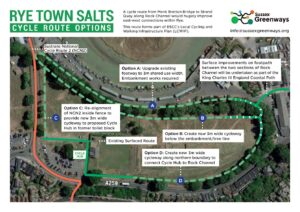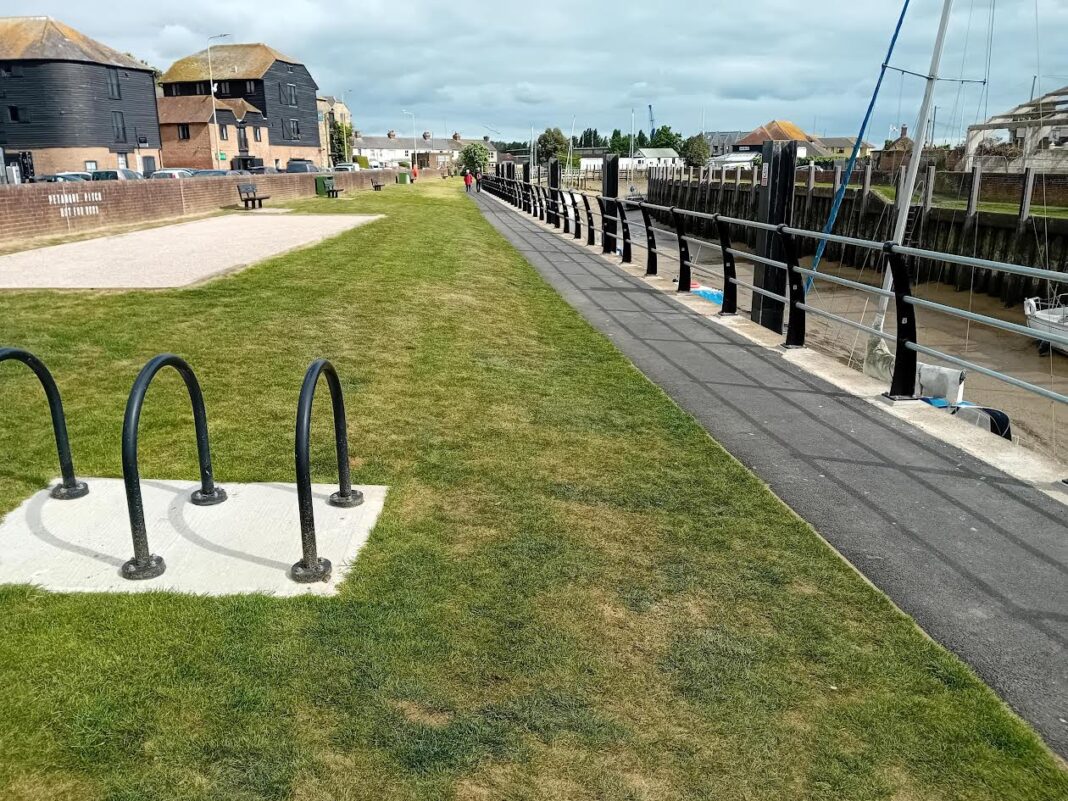Rye is an enviable position to benefit from cycle tourism. As well as being on the doorstep of 260 square kilometres of flat, low-lying land (Romney Marsh), we’re also adjacent to the wonderfully scenic High Weald National Landscape. The town is directly on National Cycle Route 2 (NCN2), which runs for 580 kilometres from Dover to St Austell in Cornwall, and midway between the ports of Newhaven and Dover, offering opportunities to attract European cyclists.
Leisure and cycle tourism on the National Cycle Network contributes over £650million to the economy and supports 15,000 jobs. Cycle tourists tend to spend more locally (because they carry less) and boost visitor numbers during the off-peak and shoulder seasons. The Camel Trail, which is a 28 kilometre long traffic-free route on a disused railway line in Cornwall, attracts 285,000 cyclists (mostly families) every year and generates £6.7million for the local economy annually.
If Rye wants to benefit from sustainable tourism and encourage walking, wheeling and cycling to improve community health and wellbeing (as supported by the Rye Neighbourhood Plan), more work is needed. The cycle charity Sustrans has done a great job recently re-surfacing two local sections of the NCN2 but East Sussex County
Council (ESCC) is still falling short on its responsibility to improve the two kilometre section connecting Gibbet Marsh with Dumb Woman’s Lane, which is an appalling state – and has been for years.
ESCC says that because it’s a bridleway, this route is the responsibility of the Rights of Way Department. This is absurd. The £150,000 cost to create an all-weather, accessible for all path would be disproportionate and unaffordable, given that the Rights of Way team is responsible for over 3,000 kilometres of footpaths and bridleways on a tiny budget.
This route should fall under ESCC’s Department for Transport, which has a budget of £80m for 2024/2025. A freedom of information request has revealed that ESCC has re-surfaced 2,336 miles of roads in the last three years. Miles of cycle track re-surfaced?
The blunt answer is “Zero”. In 2019 ESCC took £5m from the Active Travel budget to help finish the Bexhill-Hastings link road. It was never paid back.
What kind of a transport authority mis-appropriates £5m which was supposedly ring-fenced for cycling and walking to pay for an over- spend on roads and then refuses to pay £150,000 out of the £20m roads maintenance budget for a vital section of active travel infrastructure? It’s pure hypocrisy.

Crossing Rye also has its challenges, not the least of which is NCN2 going up and down steps to reach the High Street, an obstacle which leads many people to cycle the wrong way up Landgate. Perhaps a contra-flow cycle lane is the answer here?
Using Rock Channel as an alternative route to cross Rye is a logical next step. This route will be partially improved with the eventual implementation of the King Charles III Coast Path. With plans for the creation of a cycle hub in the toilet block on Lucknow Place moving forward, it also makes sense to look at options to integrate the cycle hub into new or improved routes across the Salts. It should be easy enough to do this without interfering with traditional events which are held there.
Once through Rock Channel, there’s a fairly obvious route from St Margaret’s Terrace along the newly refurbished Strand Quay to reach the zebra crossing and existing path leading to Gibbet Marsh.
Sussex Greenways is keen to work with the authorities to bring accessible routes to Rye and support walking, wheeling and cycling in the area. We’ll be discussing the above options at our next Rye Sussex Greenways meeting, Thursday, May 22 7pm in the Cinque Ports (note change of date and venue). All are very welcome.
Image Credits: Nick Hanna .




Contraflow cycling on Landgate would be easy and low cost. It is common in France where cyclists are well respected as road users.